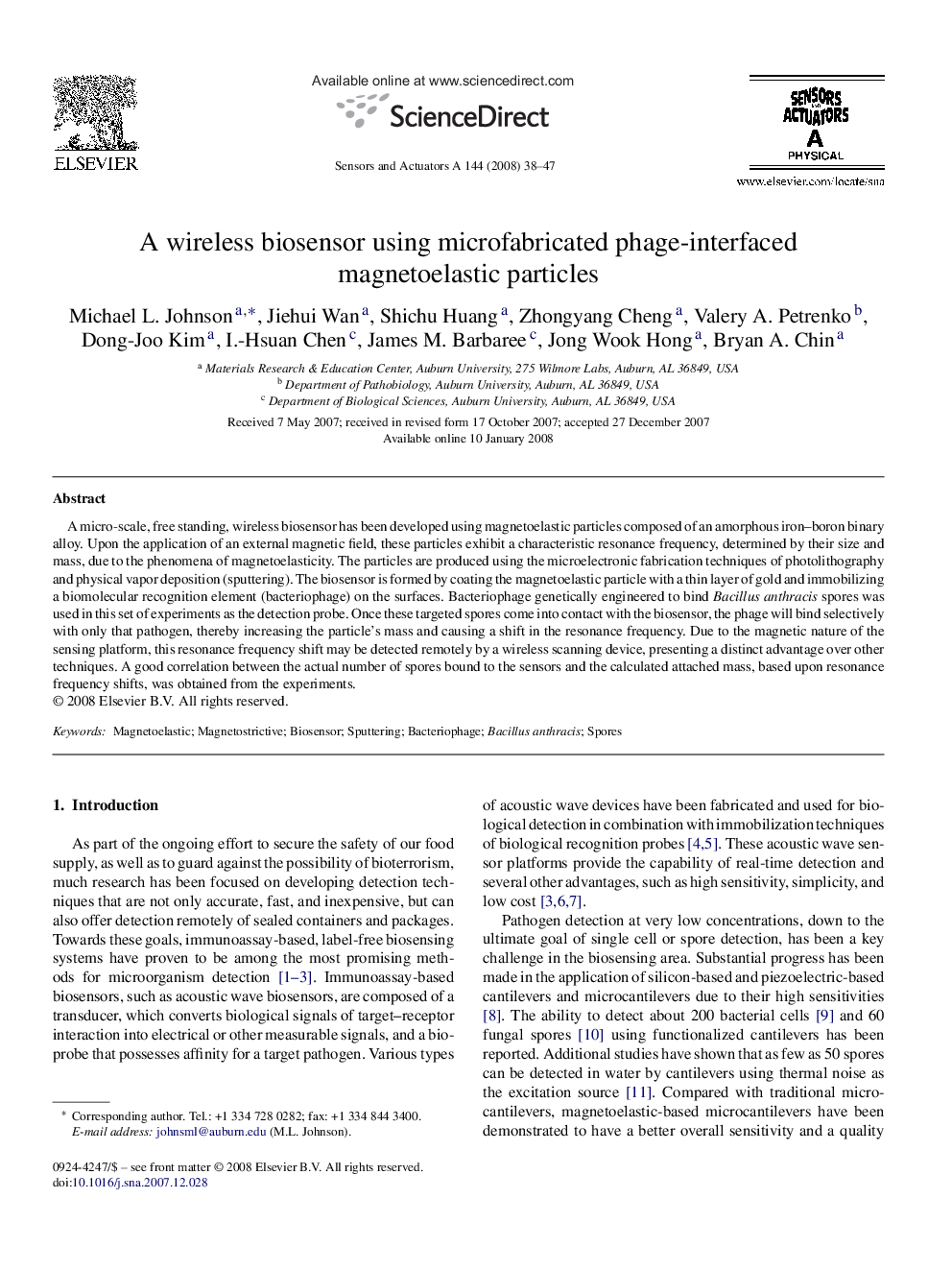| Article ID | Journal | Published Year | Pages | File Type |
|---|---|---|---|---|
| 737219 | Sensors and Actuators A: Physical | 2008 | 10 Pages |
A micro-scale, free standing, wireless biosensor has been developed using magnetoelastic particles composed of an amorphous iron–boron binary alloy. Upon the application of an external magnetic field, these particles exhibit a characteristic resonance frequency, determined by their size and mass, due to the phenomena of magnetoelasticity. The particles are produced using the microelectronic fabrication techniques of photolithography and physical vapor deposition (sputtering). The biosensor is formed by coating the magnetoelastic particle with a thin layer of gold and immobilizing a biomolecular recognition element (bacteriophage) on the surfaces. Bacteriophage genetically engineered to bind Bacillus anthracis spores was used in this set of experiments as the detection probe. Once these targeted spores come into contact with the biosensor, the phage will bind selectively with only that pathogen, thereby increasing the particle's mass and causing a shift in the resonance frequency. Due to the magnetic nature of the sensing platform, this resonance frequency shift may be detected remotely by a wireless scanning device, presenting a distinct advantage over other techniques. A good correlation between the actual number of spores bound to the sensors and the calculated attached mass, based upon resonance frequency shifts, was obtained from the experiments.
